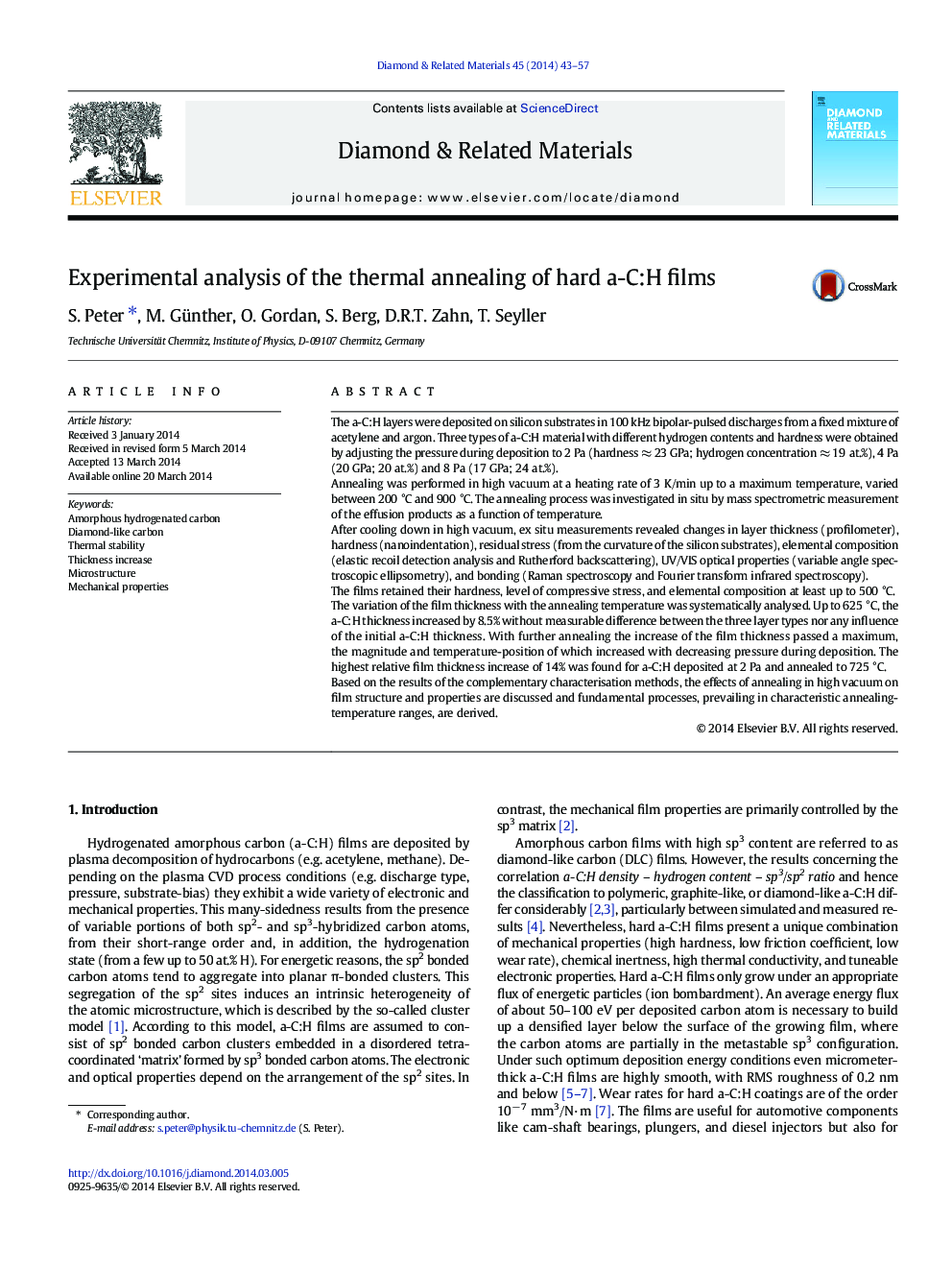| Article ID | Journal | Published Year | Pages | File Type |
|---|---|---|---|---|
| 701738 | Diamond and Related Materials | 2014 | 15 Pages |
•Effect of annealing on structure and mechanical properties of hard a-C:H is studied.•Increase of film thickness with annealing temperature is analysed in very detail.•Fundamental atomic processes, prevailing in three temperature ranges, are derived.
The a-C:H layers were deposited on silicon substrates in 100 kHz bipolar-pulsed discharges from a fixed mixture of acetylene and argon. Three types of a-C:H material with different hydrogen contents and hardness were obtained by adjusting the pressure during deposition to 2 Pa (hardness ≈ 23 GPa; hydrogen concentration ≈ 19 at.%), 4 Pa (20 GPa; 20 at.%) and 8 Pa (17 GPa; 24 at.%).Annealing was performed in high vacuum at a heating rate of 3 K/min up to a maximum temperature, varied between 200 °C and 900 °C. The annealing process was investigated in situ by mass spectrometric measurement of the effusion products as a function of temperature.After cooling down in high vacuum, ex situ measurements revealed changes in layer thickness (profilometer), hardness (nanoindentation), residual stress (from the curvature of the silicon substrates), elemental composition (elastic recoil detection analysis and Rutherford backscattering), UV/VIS optical properties (variable angle spectroscopic ellipsometry), and bonding (Raman spectroscopy and Fourier transform infrared spectroscopy).The films retained their hardness, level of compressive stress, and elemental composition at least up to 500 °C.The variation of the film thickness with the annealing temperature was systematically analysed. Up to 625 °C, the a-C:H thickness increased by 8.5% without measurable difference between the three layer types nor any influence of the initial a-C:H thickness. With further annealing the increase of the film thickness passed a maximum, the magnitude and temperature-position of which increased with decreasing pressure during deposition. The highest relative film thickness increase of 14% was found for a-C:H deposited at 2 Pa and annealed to 725 °C.Based on the results of the complementary characterisation methods, the effects of annealing in high vacuum on film structure and properties are discussed and fundamental processes, prevailing in characteristic annealing-temperature ranges, are derived.
